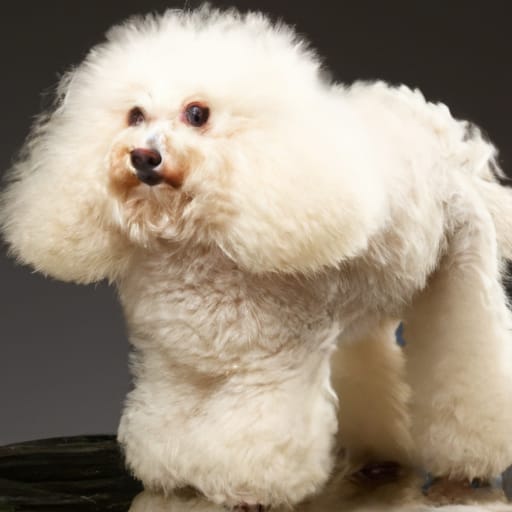Sheepadoodles Shedding: Why Do Sheepadoodles Shed?
Do Sheepadoodles Shed? Today, we invite you to take a closer look at the intriguing world of Sheepadoodles shedding. Have you ever wondered why these adorable and fluffy pups have a tendency to leave a trail of fur in their wake? In this article, we will explore the factors behind Sheepadoodles shedding and uncover some helpful tips to manage and minimize this common occurrence. So, grab a cup of tea, get cozy, and let’s embark on this shedding adventure together!

Understanding Sheepadoodles Shedding
What is a Sheepadoodle?
A Sheepadoodle is a hybrid breed that is a cross between an Old English Sheepdog and a Poodle. They are known for their adorable and fluffy appearance, which makes them a popular choice among dog lovers. Sheepadoodles are well-loved for their friendly nature, intelligence, and hypoallergenic coat. However, one aspect that potential owners should consider is shedding.
What is shedding in dogs?
Shedding is a natural process that occurs in dogs, where they lose their old and damaged fur to make way for new hair growth. It is a completely normal and essential part of a dog’s life cycle. Shedding helps dogs regulate their body temperature and keeps their skin and coat healthy. However, the amount of shedding can vary greatly among different dog breeds, and even within the same breed.
Why do Sheepadoodles shed?
Sheepadoodles shed because both of their parent breeds, the Old English Sheepdog and the Poodle, shed to some extent. While Poodles have a reputation for being low-shedding dogs, this doesn’t mean they don’t shed at all. Poodles have hair instead of fur, which grows continuously, similar to human hair. The dead hair gets caught in the coat instead of falling out like fur, leading to less shedding but still requiring regular grooming.
On the other hand, the Old English Sheepdog has a thick double coat that is prone to shedding. This coat helps them stay warm in cold climates, but it also means that some amount of shedding is inevitable. When these two breeds are crossed to create Sheepadoodles, the resulting offspring can inherit a variety of coat types, depending on which genes they inherit from their parents. This can make predicting the amount of shedding in Sheepadoodles a bit more challenging.
Factors Affecting Sheepadoodle Shedding
Genetics
Genetics play a significant role in determining the shedding characteristics of a Sheepadoodle. While it’s not possible to predict the exact shedding tendencies of an individual Sheepadoodle, knowing the shedding history of its parent breeds can provide some insight. If both parents are low-shedding, there is a higher chance that the offspring will inherit a similar coat type. However, if one parent sheds heavily, there is a possibility that the Sheepadoodle may shed more.
Coat Type
The coat type of a Sheepadoodle can greatly influence the amount of shedding it experiences. Sheepadoodles can have different types of coats, including straight, wavy, or curly. The curlier the coat, the less likely it is to shed. This is because curly hair tends to trap dead hair within the curls, preventing it from falling out. Straighter or wavier coats might shed more as the dead hair is likely to be released more easily.
Seasonal Changes
Another factor that affects Sheepadoodle shedding is seasonal changes. Just like many other dog breeds that have a thick double coat, Sheepadoodles tend to shed more during the change of seasons. This shedding is often referred to as “blowing their coat.” During this time, they shed their winter coat in preparation for the warmer months. The shedding can be more pronounced during spring and fall, but with regular grooming, it can be managed effectively.
Health Issues
Sometimes, excessive shedding in Sheepadoodles can be a sign of an underlying health issue. Conditions such as allergies, hormonal imbalances, or poor nutrition can lead to increased shedding. If you notice that your Sheepadoodle is shedding excessively or if the shedding is accompanied by other symptoms such as itching, hair loss, or changes in behavior, it is essential to consult a veterinarian for a thorough examination and appropriate treatment.
Diet
A balanced and nutritious diet also plays a role in minimizing excessive shedding in Sheepadoodles. Providing your dog with high-quality, nutrient-rich food helps maintain a healthy coat and skin. Omega-3 fatty acids, such as those found in fish oil, can be beneficial in reducing shedding and promoting a healthy coat. Consult with your veterinarian to ensure that your Sheepadoodle’s diet is meeting its nutritional needs and to discuss any potential dietary supplements that can help with shedding.

Managing Sheepadoodle Shedding
Regular Grooming
Regular grooming is essential for managing shedding in Sheepadoodles. This includes brushing their coat to remove loose hair and prevent mats and tangles from forming. The frequency of brushing may vary depending on the length and thickness of your Sheepadoodle’s coat, but a good rule of thumb is to brush them at least a few times a week. By doing this, you can help minimize the amount of loose hair that ends up on your floors and furniture.
Bathing and Brushing
Bathing your Sheepadoodle regularly is also crucial for managing shedding. Bathing helps remove dirt, dander, and loose hair from their coat, promoting a healthier and cleaner coat. Use a gentle, dog-specific shampoo that is suitable for your Sheepadoodle’s skin type. After bathing, make sure to thoroughly dry their coat to prevent any moisture from becoming trapped, which can lead to skin issues.
Brushing your Sheepadoodle before and after bathing is also recommended. This helps remove any loose hair and prevents mats and tangles from forming during bathing. Use a slicker brush or a comb with wide-spaced teeth to penetrate the coat and remove any tangles gently. Taking your time and using positive reinforcement can help make the grooming process enjoyable for both you and your Sheepadoodle.
Dealing with Mats and Tangles
Mats and tangles can be a common issue in Sheepadoodles, especially if their coat is left unattended. Mats occur when the hair becomes tangled and clumps together, while tangles are areas where the hair has become twisted. These can be uncomfortable for the dog and may lead to skin irritation or infection if not addressed. Regular brushing, especially in areas prone to matting, such as behind the ears and under the armpits, can help prevent mats and tangles from forming.
In the case of severe mats or tangles, it may be necessary to visit a professional groomer who specializes in dealing with these issues. Professional groomers have the tools and expertise to safely remove mats and tangles without causing discomfort or injury to your Sheepadoodle.
Proper Nutrition
Maintaining a healthy diet is crucial for a Sheepadoodle’s overall wellbeing, including its coat health. Make sure your Sheepadoodle is receiving a well-balanced diet that includes high-quality protein, essential fatty acids, and vitamins and minerals. These nutrients are essential for promoting a healthy coat and reducing excessive shedding. Consult with your veterinarian to determine the best diet for your Sheepadoodle’s specific needs.
Supplements and Medications
In some cases, supplements or medications may be recommended by your veterinarian to help manage excess shedding in Sheepadoodles. Omega-3 fatty acid supplements, such as fish oil, are often recommended as they can improve the health of the skin and coat. Additionally, there are certain medications available that can help regulate shedding if it is caused by an underlying health condition. However, it is crucial to consult with your veterinarian before introducing any supplements or medications to ensure they are safe and appropriate for your Sheepadoodle.
Best Practices for Sheepadoodle Owners
Use the Right Tools
Using the right grooming tools is crucial for effectively managing shedding in Sheepadoodles. Invest in a high-quality brush that is appropriate for your Sheepadoodle’s coat type. Slicker brushes, combs, and undercoat rakes are commonly used for Sheepadoodles. Research the different types of brushes available and consult with a professional groomer if you are unsure which one would work best for your dog.
Create a Grooming Routine
Establishing a regular grooming routine is essential for keeping your Sheepadoodle’s shedding under control. Set aside a specific time each week for grooming and stick to it. This not only helps minimize shedding but also allows you to bond with your pet and maintain their coat’s cleanliness and overall health. Consistency and patience are key when it comes to grooming, so be sure to make it a positive and enjoyable experience for your Sheepadoodle.
Professional Grooming
While regular home grooming is important, there may be occasions when you need the assistance of a professional groomer. Professional groomers have the expertise and tools to effectively manage shedding, especially during heavy shedding seasons. They can provide services such as deshedding treatments, which help remove excess hair and reduce shedding. Regular appointments with a professional groomer can help keep your Sheepadoodle’s coat healthy and minimize shedding.
Keep the Environment Clean
To minimize the impact of shedding on your home, it is important to keep the environment clean. Regularly vacuum your floors and furniture to remove any loose hair. Using lint rollers or pet hair removal tools can also help remove hair from upholstery and clothing. Establishing designated areas where your Sheepadoodle is allowed to spend time can also help contain the shedding to specific areas of your home.
Consult a Veterinarian
If you are concerned about the amount of shedding your Sheepadoodle is experiencing or if you notice any changes in their shedding patterns, it is important to consult a veterinarian. They can assess your dog’s overall health and provide guidance on managing shedding. Additionally, a veterinarian can help rule out any underlying health issues that may be causing excessive shedding.
In conclusion, Sheepadoodles can shed to varying degrees depending on their genetics, coat type, seasonal changes, health issues, and diet. However, with proper care and attention, including regular grooming, bathing, and a nutritious diet, Sheepadoodle shedding can be effectively managed. By following best practices for Sheepadoodle owners and consulting with a veterinarian when needed, you can keep your Sheepadoodle healthy, happy, and looking their best.











